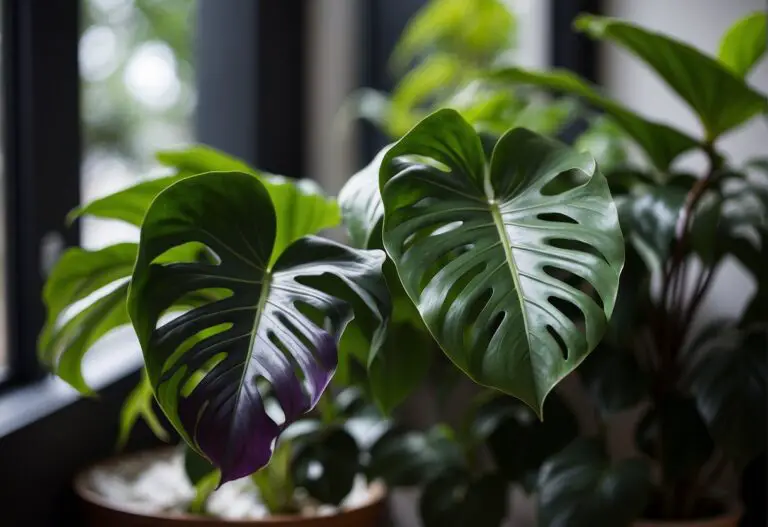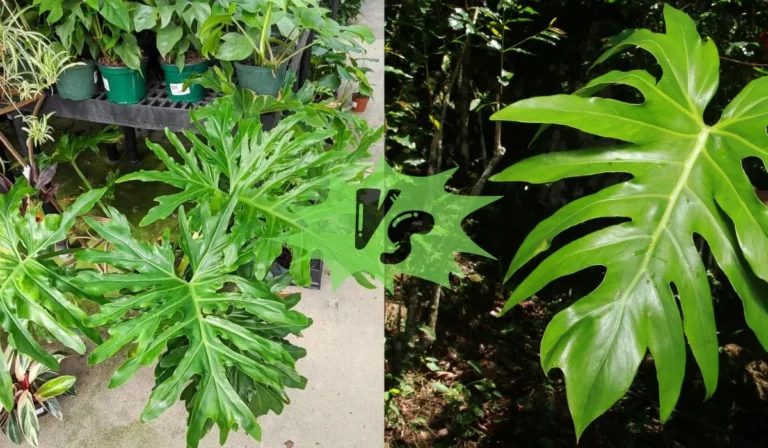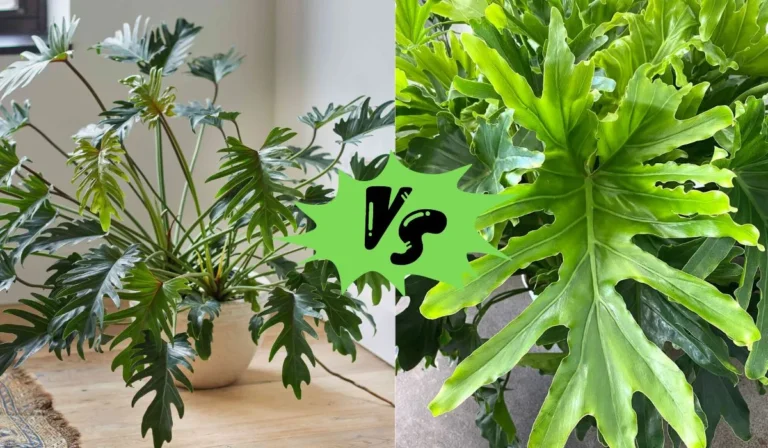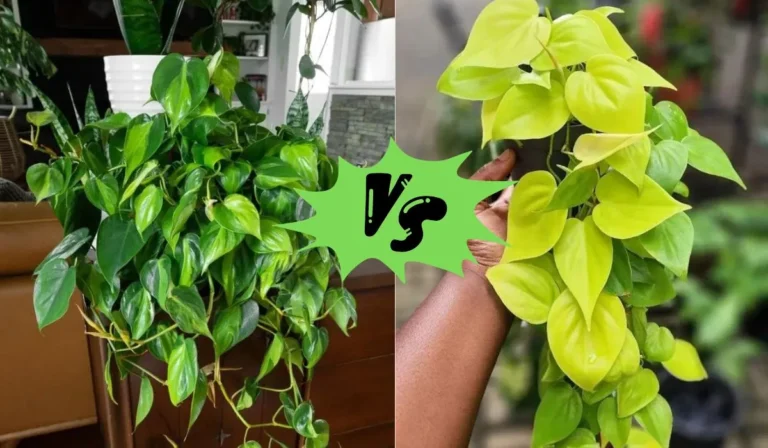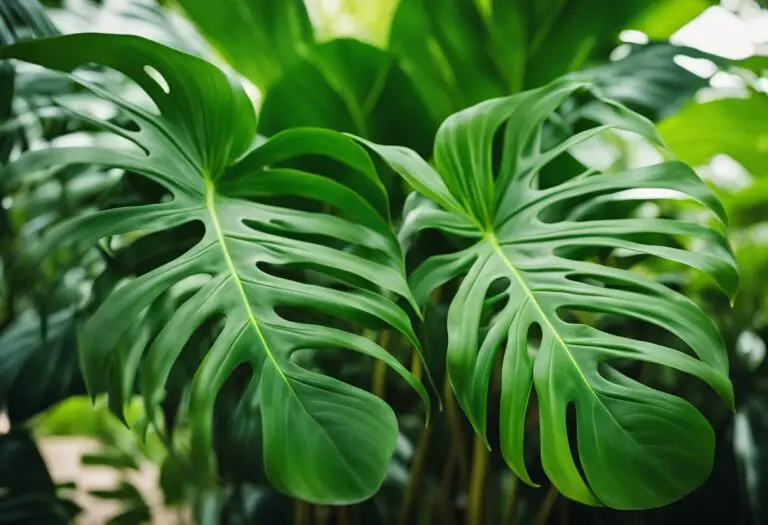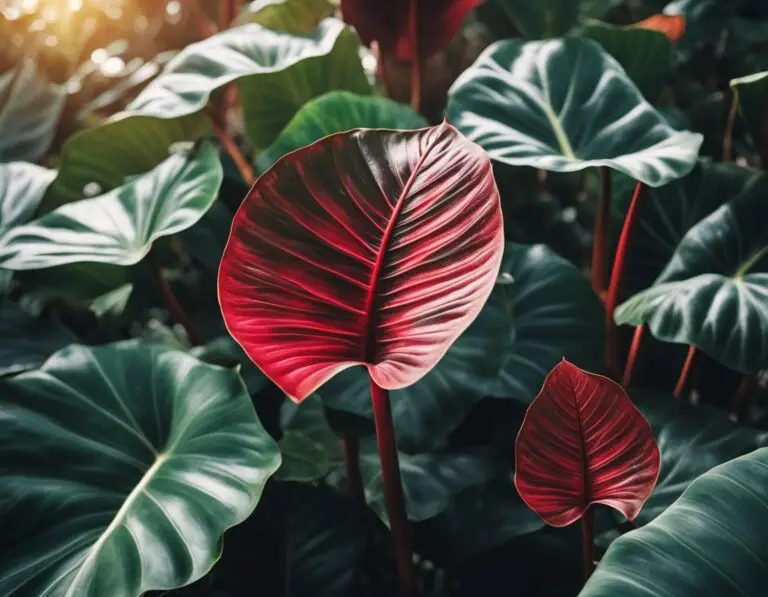Philodendron Splendid vs Verrucosum: A Comparative Analysis
If you’re a fan of philodendrons, you might be wondering about the differences between Philodendron Splendid and Philodendron Verrucosum.
Both plants are known for their beautiful foliage and are popular among houseplant enthusiasts. While they share some similarities, there are also some key differences that set them apart.

Philodendron Splendid is a hybrid plant that was created by crossing Philodendron Melanochrysum and Philodendron Verrucosum. It is a relatively fast-growing plant that can reach up to 2-3 feet tall and has bright green leaves with a glossy sheen.
On the other hand, Philodendron Verrucosum has dark green leaves with a velvety texture and is known for its unique, heart-shaped leaves. While both plants require similar care, there are some differences in their growth habits and care requirements.
Key Takeaways
- Philodendron Splendid is a hybrid plant that was created by crossing Philodendron Melanochrysum and Philodendron Verrucosum.
- Philodendron Verrucosum has dark green leaves with a velvety texture and is known for its unique, heart-shaped leaves.
- Both plants require similar care, but there are some differences in their growth habits and care requirements.
Botanical Classification

Genus Philodendron
Philodendron Splendid and Verrucosum are both part of the Philodendron genus, which is a large and diverse group of tropical plants.
The Philodendron genus belongs to the family Araceae and is native to Central and South America. Philodendrons are known for their large, glossy leaves and ease of care, making them a popular choice for both indoor and outdoor gardens.
Species Distinctions
Philodendron Splendid is a hybrid of Philodendron Verrucosum and Philodendron Melanochrysum. It has large, velvety leaves with a dark green color and creamy veins.
On the other hand, Philodendron Verrucosum has smaller leaves with a velvety texture and a dark green color. The leaves have a unique texture due to the raised veins, which gives it a rough, bumpy appearance.
Philodendron Splendid is often mistaken for Philodendron Verrucosum due to their similar appearance. However, the main difference between the two is the size of their leaves. Philodendron Splendid has larger leaves, while Philodendron Verrucosum has smaller leaves.
Origin and Habitat
Native Regions
Philodendron Splendid and Verrucosum are both native to the tropical regions of South America.
Specifically, they are found in countries such as Colombia, Venezuela, and Ecuador. These plants thrive in the warm and humid climates of the rainforests.
Growth Habitats
Philodendron Splendid and Verrucosum are epiphytic plants, which means that they grow on other plants, such as trees, for support.
They are also hemiepiphytic, which means that they start their life as an epiphyte but eventually grow roots that reach the ground and allow them to grow as a terrestrial plant.
These plants prefer to grow in well-draining soils that are rich in organic matter. They require consistent moisture and high humidity levels to thrive. In their natural habitat, they can be found growing on the forest floor or on tree trunks and branches.
Morphological Differences
Leaf Structure
The leaves of Philodendron Splendid are big, bold, and velvety with prominent veins, while the leaves of Philodendron Verrucosum are heart-shaped and glossy.
The Splendid variety is a hybrid of Verrucosum and Melanochrysum, which gives it a unique texture and appearance. The Splendid variety produces larger leaves than the Verrucosum, which makes it an eye-catching addition to any indoor plant collection.
Stem Characteristics
The stem of Philodendron Splendid is thick and sturdy, while the stem of Philodendron Verrucosum is slender and delicate.
The Splendid variety has a strong stem that can support the weight of its big leaves, while the Verrucosum has a weak stem that may require staking. The Splendid variety also has a more upright growth habit than the Verrucosum, which tends to trail or climb.
Root System
The root system of Philodendron Splendid is extensive and well-developed, while the root system of Philodendron Verrucosum is shallow and weak.
The Splendid variety has a robust root system that provides stability and allows it to absorb nutrients efficiently. The Verrucosum, on the other hand, has a weak root system that may require frequent watering and fertilization.
Growth and Care
Philodendron Splendid and Verrucosum are both tropical plants that require similar care. Here are the main things you need to know about taking care of these plants:
Light Requirements
Both Philodendron Splendid and Verrucosum prefer bright, indirect light. Direct sunlight can damage their leaves. If you notice that the leaves are turning yellow or brown, it might be a sign that the plant is getting too much light.
On the other hand, if the leaves are small and the stems are elongated, it might be a sign that the plant is not getting enough light.
Watering Schedule
Philodendron Splendid and Verrucosum require regular watering, but you should be careful not to overwater them.
Overwatering can lead to root rot and other problems. The soil should be moist but not waterlogged. You can check the moisture level of the soil by sticking your finger into it. If the soil feels dry, it’s time to water the plant.
Soil Preferences
These plants prefer well-draining soil that is rich in organic matter. You can use a mixture of peat moss, perlite, and vermiculite to create the ideal soil for Philodendron Splendid and Verrucosum. Avoid using heavy soils that retain water, as they can lead to root rot.
Temperature and Humidity
Philodendron Splendid and Verrucosum thrive in warm, humid environments. The ideal temperature range for these plants is between 65°F and 85°F.
They also require high humidity levels, ideally between 60% and 80%. You can increase the humidity around your plants by misting them regularly or placing a humidifier nearby.
Propagation Techniques
Philodendron splendid and verrucosum can be propagated using stem cuttings and seed germination.
Stem Cuttings
Stem cuttings are the most common propagation method for philodendrons. To propagate philodendron splendid or verrucosum using stem cuttings, you need to select a healthy stem with at least two or three sets of leaves. Cut the stem below a node, and remove the lower leaves.
Dip the cut end in rooting hormone and plant it in moist soil or water. Keep the soil or water moist, and place the cutting in a warm, bright location. Roots should develop in a few weeks, and once they do, the cutting can be transplanted to a larger pot.
Seed Germination
Seed germination is another way to propagate philodendrons, but it is less common. To germinate philodendron seeds, you need to soak them in water for a few hours, then plant them in a mixture of peat moss and perlite.
Cover the pot with plastic wrap to create a humid environment, and place it in a warm, bright location. The seeds should germinate in a few weeks, and once they do, the seedlings can be transplanted to a larger pot.
Related Posts:
Common Issues and Solutions
Pest Infestations
Philodendron Splendid and Verrucosum are susceptible to pest infestations. Common pests include spider mites, mealybugs, and scale insects. These pests can cause damage to the leaves and stems of the plant, leading to stunted growth and reduced overall health.
To prevent pest infestations, regularly inspect your plants for signs of infestation, such as webbing, sticky residue, or visible insects. If you notice any signs of infestation, isolate the affected plant and treat it with an insecticidal soap or neem oil. Additionally, avoid overwatering your plants, as moisture can create a breeding ground for pests.
Disease Prevention
Both Philodendron Splendid and Verrucosum are generally healthy plants, but they can be susceptible to fungal and bacterial diseases.
To prevent disease, ensure proper air circulation around your plants and avoid overcrowding them. Additionally, avoid getting water on the leaves of your plants, as moisture can create a breeding ground for disease.
If you notice any signs of disease, such as wilting, yellowing leaves, or black spots, immediately isolate the affected plant and treat it with a fungicide or bactericide. Additionally, remove any affected leaves or stems to prevent the disease from spreading.
Leaf Discoloration
Leaf discoloration is a common issue with Philodendron Splendid and Verrucosum. Yellowing leaves can be a sign of overwatering or underwatering, while brown or black spots can be a sign of disease or pest infestation.
To prevent leaf discoloration, ensure proper watering and drainage for your plants. Additionally, avoid exposing your plants to direct sunlight, which can scorch the leaves and cause discoloration.
If you notice any signs of discoloration, adjust your watering schedule and inspect your plants for signs of disease or pest infestation.
Decorative Uses
Philodendron Splendid and Philodendron Verrucosum are both great plants to add to your indoor landscaping or container gardening. Here are some ways you can use them to decorate your space:
Indoor Landscaping
Philodendron Splendid and Philodendron Verrucosum are both great plants for indoor landscaping. They can be used to create a lush, tropical look in your home or office.
These plants can be placed in large pots or planters and used as a focal point in a room. They can also be used as a backdrop for other plants or decorative objects.
Container Gardening
Philodendron Splendid and Philodendron Verrucosum are both great plants for container gardening. They can be planted in large pots or planters and used to create a tropical look on a patio or balcony.
These plants can be mixed with other plants to create a lush, tropical garden. They can also be used as a focal point in a container garden.
Overall, Philodendron Splendid and Philodendron Verrucosum are great plants to add to your indoor landscaping or container gardening. They are easy to care for and can add a tropical look to any space.
Frequently Asked Questions
What are the distinguishing characteristics between Philodendron splendid and Philodendron verrucosum?
Philodendron splendid is a hybrid of Philodendron melanochrysum and Philodendron verrucosum.
It has soft, velvety leaves with high-contrast veins, while Philodendron verrucosum has large, dark green leaves with prominent veins. Philodendron splendid is also known for its yellowish veins, which are not present in Philodendron verrucosum.
How does the care differ for Philodendron splendid compared to Philodendron verrucosum?
Both Philodendron splendid and Philodendron verrucosum prefer bright, indirect light and well-draining soil.
Philodendron splendid requires more frequent watering than Philodendron verrucosum, but both plants benefit from consistent moisture. Philodendron splendid also benefits from occasional misting to increase humidity.
What are the typical size differences between Philodendron splendid and Philodendron verrucosum?
Philodendron splendid leaves can reach up to 2 feet in length and 1 foot in width, while Philodendron verrucosum leaves can grow up to 3 feet in length and 1.5 feet in width. However, the size of the plants can vary depending on growing conditions.
How can one effectively identify a Philodendron splendid plant?
Philodendron splendid can be identified by its soft, velvety leaves with high-contrast veins and yellowish veins. It is also a climbing plant that may require a moss pole for support as it can become quite heavy.
What is the relative rarity and price comparison of Philodendron splendid to Philodendron verrucosum?
Philodendron splendid is a relatively rare plant and can be more expensive than Philodendron verrucosum due to its unique characteristics.
How does Philodendron splendid’s growth and maintenance compare with that of Philodendron gloriosum?
Philodendron splendid and Philodendron gloriosum have similar care requirements, including bright, indirect light and consistent moisture. However, Philodendron gloriosum has larger, heart-shaped leaves with prominent veins and is a slower grower than Philodendron splendid.
Related Posts:

